Related Research Articles

The Durrani Empire, also called the Sadozai Kingdom and the Afghan Empire, was founded and built by Ahmad Shah Abdali in parts of Central Asia, Middle East and South Asia. At its maximum extent, the empire ruled over the modern-day countries of Afghanistan and Pakistan, as well as parts of northeastern and southeastern Iran, eastern Turkmenistan, and northwestern India.
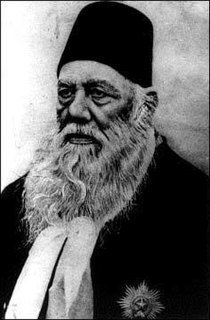
Sir Syed Ahmad Taqvi bin Syed Muhammad Muttaqi KCSI, commonly known as Sir Syed Ahmad Khan, was an Islamic pragmatist, Islamic reformer, philosopher, and educationist in nineteenth-century British India. Though initially espousing Hindu-Muslim unity, he became the pioneer of Muslim nationalism in India and is widely credited as the father of Two-Nation Theory which formed the basis of Pakistan movement. Born into a family with strong debts to the Mughal court, Ahmad studied the Quran and Sciences within the court. He was awarded an honorary LLD from the University of Edinburgh in 1889.
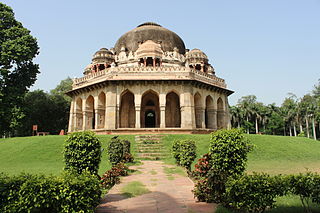
The Sayyid dynasty was the fourth dynasty of the Delhi Sultanate, with four rulers ruling from 1414 to 1451. Founded by Khizr Khan, a former governor of Multan, they succeeded the Tughlaq dynasty and ruled the sultanate until they were displaced by the Lodi dynasty. Members of the dynasty derived their title, Sayyid, or the descendants of the Islamic prophet, Muhammad, based on the claim that they belonged to his lineage through his daughter Fatima, and son-in-law and cousin Ali.

Abu'l Muzaffar Muin ud-din Muhammad Shah Farrukh-siyar Alim Akbar Sani Wala Shan Padshah-i-bahr-u-bar (Persian: ابو المظفر معید الدین محمد شاه فرخ سیر علیم اکبر ثانی والا شان پادشاه بحر و بر), also known as Shahid-i-Mazlum, or Farrukhsiyar (20 August 1685 – 19 April 1719), was the Mughal emperor from 1713 to 1719 after he murdered Jahandar Shah. Reportedly a handsome man who was easily swayed by his advisers, he lacked the ability, knowledge and character to rule independently. Farrukhsiyar was the son of Azim-ush-Shan and Sahiba Nizwan.

Major General Sir Alexander Cunningham was a British army engineer with the Bengal Engineer Group who later took an interest in the history and archaeology of India. In 1861, he was appointed to the newly created position of archaeological surveyor to the government of India; and he founded and organised what later became the Archaeological Survey of India.
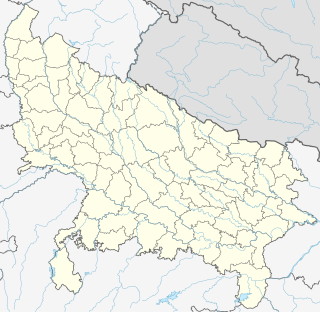
Bijnor is a city and a municipal board in Bijnor district in the state of Uttar Pradesh, India. To boost its development, there is demand for the inclusion of Bijnor in the Delhi NCR.
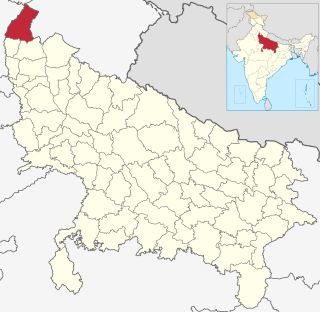
Saharanpur district is the northernmost of the districts of Uttar Pradesh state, India. Bordering the states of Haryana, Himachal Pradesh and Uttarakhand, and close to the foothills of Shivalik range, it lies in the northern part of the Doab region. It is primarily an agricultural area.
Syed Nazeer Husain Dehlawi was a leading scholar of the reformist Ahl-i Hadith movement and one of its major proponents in India. Earning the appellation shaykh al-kull for his authority among early Ahl-i Hadith scholars, he is regarded, alongside Siddiq Hasan Khan (1832–1890), as the founder of the movement and has been described as "perhaps the single most influential figure in the spread of the Ahl-i-Ḥadīth".

Muḥammad Ashraf 'Alī Thānvī was an Indian Sunni scholar and a Sufi mentor of the Hanafi school. He wrote the tafsīr Bayan Ul Quran and Bahishti Zewar.
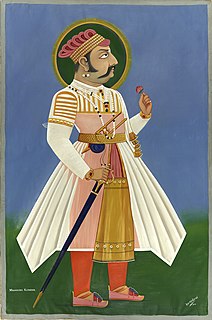
Kumbhakarna, popularly known as Rana Kumbha, was the ruler of Mewar kingdom of western India. He belonged to the Sisodia clan of Rajputs.
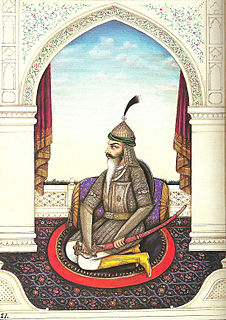
Hari Singh Nalwa (1791–1837) was Commander-in-chief of the Sikh Khalsa Fauj, the army of the Sikh Empire. He is known for his role in the conquests of Kasur, Sialkot, Attock, Multan, Kashmir, Peshawar and Jamrud. Hari Singh Nalwa was responsible for expanding the frontier of Sikh Empire to beyond the Indus River right up to the mouth of the Khyber Pass. At the time of his death, the western boundary of the empire was Jamrud.

Syed Ahmad Barelvi or Sayyid Ahmad Shaheed (1786–1831) was an Indian Maturidi Muslim revivalist from Raebareli, a part of the historical United Provinces of Agra and Oudh. The epithet Barelvi is derived from Rae Bareilly, his place of origin. His ancestors had migrated to India in the early 13th century AD.

The Battle of Haldighati was a battle fought on 18 June 1576 between cavalry and archers supporting the Rana of Mewar, Maharana Pratap, and the Mughal emperor Akbar's forces, led by Man Singh I of Amber. The Mughals were the victors and inflicted significant casualties among the Mewaris but failed to capture Pratap, who escaped.

Sirhind-Fategarh is a city and a municipal council in the Fatehgarh Sahib district in the Indian state of Punjab.

Kotla Mubarakpur Complex, a medieval village, is now a market place with a residential colony in South central part of New Delhi. The village Kotla Mubarakpur is dominated by Bainsla and Baisoya gotra of Gurjar. Classified by the Delhi Development Authority (D.D.A.) as an Urban Village, it is situated within touching distance of South Extension. Defence Colony lies to its east. Nearest Delhi Metro station is South Extension, INA metro station and Lajpat Nagar. Its history can be traced to the prominent tomb of Muizud Din Mubarak Shah, son of Khizr Khan of the Sayyid dynasty of the fifteenth century Delhi Sultanate rule in India, and its adjoining mosque. There are several other tombs of Lodi Dynasty period such as the Darya Khan's tomb, Kale Khan ka Gumbad, Bare Khan ka Gumbad, Chote Khan Ka Gumbad and Bhure Khan ka Gumbad, and also a Baoli.
Sirhind is the older name of Fatehgarh Sahib. It is situated on the Delhi to Lahore Highway. It has a population of about 60,851 . It is now a district headquarters in the state of Punjab; the name of the district is Fatehgarh Sahib.
Madrasatu l-‘Arūsiyyah is the oldest institution of Arabic and Islamic learning in the South Indian state of Tamil Nadu. It is situated in the coastal town and Islamic centre of Kilakarai. It was established in 1082 AH/1671 AD by the venerated Muslim savant and saint of the Arwi region, Shaikh Ṣadaqatullāh b. Sulaimān al-Qāhirī aṣ-Ṣiddiqī. He is known by the Arabic epithet Mādiḥu r-Rasūl. The Tamil-speaking Muslim masses and scholars of Tamil Nadu also refer to him as Appā in their discourse and literature.
Habib Swalehd or Salih bin Alawi Jamal al-Layl (1853-1936) was an Islamic scholar who resided in Lamu, Kenya.

Dost Mohammad Khan was the founder of the Bhopal State in central India. He founded the modern city of Bhopal, the capital of the Madhya Pradesh state.
The Aligarh Movement was the push to establish a modern system of education for the Muslim population of British India, during the later decades of the 19th century. The movement's name derives from the fact that its core and origins lay in the city of Aligarh in Northern India and, in particular, with the foundation of the Muhammadan Anglo-Oriental College in 1875. The founder of the oriental college, and the other educational institutions that developed from it, was Sir Syed Ahmed Khan. He became the leading light of the wider Aligarh Movement.
References
- Singh, Upinder (2004). The discovery of ancient India: early archaeologists and the beginnings of archaeology. Permanent Black. ISBN 9788178240886.
- Masselos, Jim (2011). Beato's Delhi: 1857 and Beyond. Penguin UK. ISBN 9789351181996.